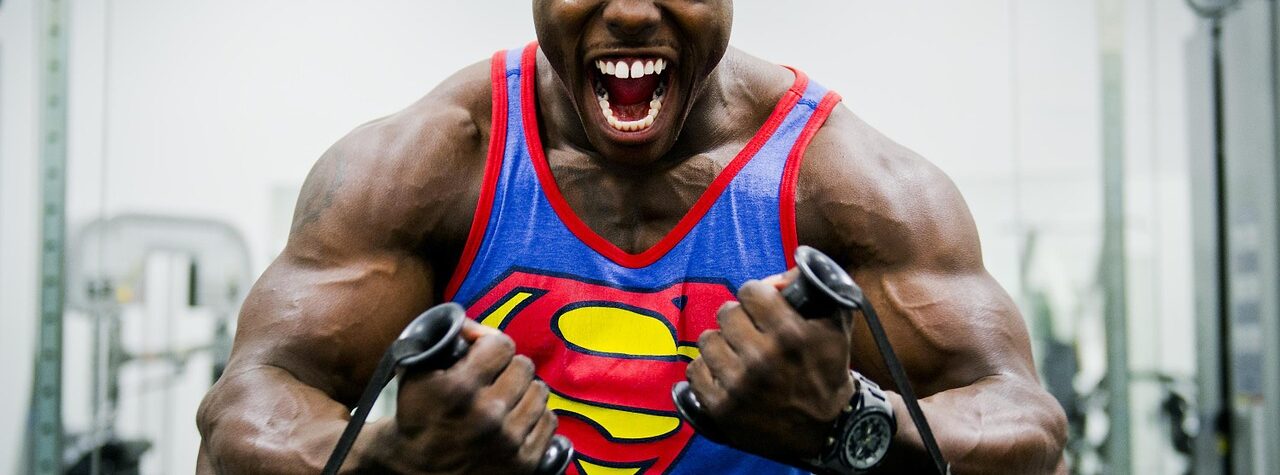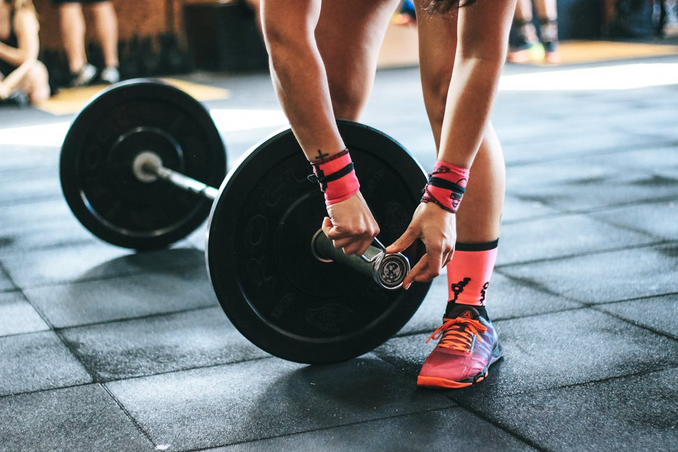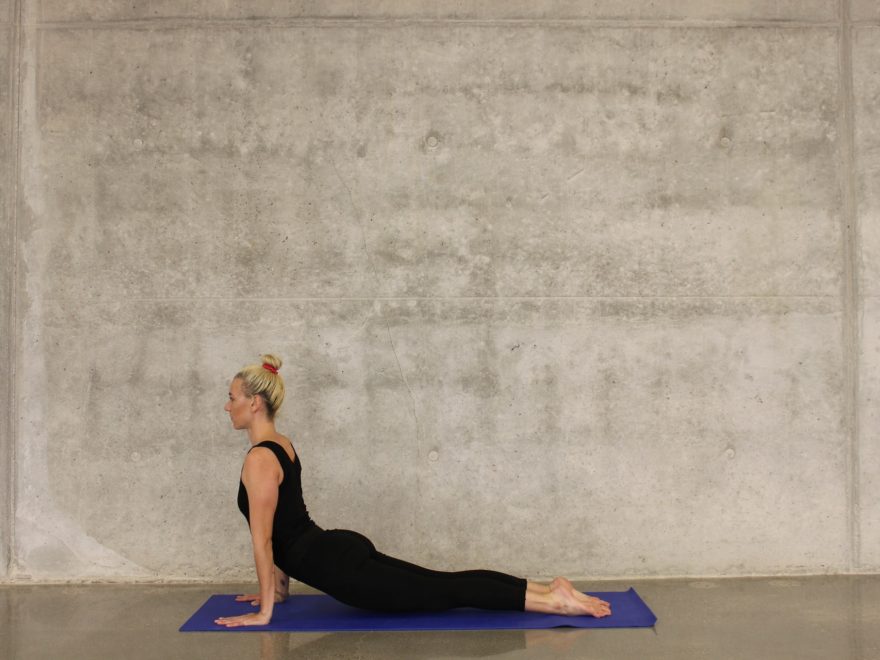Not every workout happens in a gym. Many people burn calories without ever putting on workout clothes. Daily chores like vacuuming, scrubbing, sweeping, and carrying laundry all require movement, effort, and energy. These actions, as featured on WorldHealth.net, may seem routine, but they activate muscles and elevate heart rate. That makes them effective, even if unintentional, forms of physical activity.
Movement That Adds up
One task doesn’t seem like much. But when you clean the house for an hour or more, it becomes real work for your body. Bending, lifting, reaching, and walking from room to room add up fast. The energy you use during these motions contributes to your overall calorie burn for the day. For example, vacuuming can burn 150 to 200 calories per hour, depending on intensity. Scrubbing the bathtub or washing windows takes effort and builds upper-body strength. Even making beds and tidying up improves mobility, especially when done at a quick pace.
Muscles in Motion

Housework targets more muscle groups than people realize. Mopping works the arms and shoulders. Carrying laundry or groceries activates your core and legs. Gardening, which is often part of yard maintenance, strengthens glutes, hamstrings, and even your back. These repetitive motions build endurance and coordination. Over time, they also increase muscular control. Unlike machines at the gym, household tasks involve shifting loads, uneven surfaces, and constant movement. That dynamic environment keeps your muscles guessing.
Heart Health Booster at Home
Many chores naturally raise your heart rate. Cleaning quickly or working in bursts mimics interval-style cardio. Your heart pumps faster. You breathe deeper. Blood circulates more efficiently throughout the body. That’s a win for cardiovascular health. Just 30 minutes of moderate movement a day supports better circulation, reduces blood pressure, and helps regulate blood sugar levels. Doing housework regularly makes that goal easier to reach. You’re staying active without carving out separate time for exercise.
Mental Health Benefits of a Tidy Space

Beyond the physical, cleaning helps your mind. Studies show that organized environments reduce stress and boost focus. The act of cleaning itself can feel calming. It provides structure and a sense of control. It also gives a clear before-and-after effect. You start with a mess. You finish with a clean, functional space. That progress is motivating. It lifts mood and builds momentum for other healthy habits. Doing a task that engages your body and clears your space can offer a mental reset. When you’re overwhelmed, starting with one small task like sweeping or washing dishes can create a shift in energy.
A Unique Opportunity for Daily Activity
The modern lifestyle often limits physical movement. We sit too much at work, in traffic, and during screen time. Housework is one of the few daily tasks that still involves consistent movement. Taking it seriously can change how we view physical activity. Instead of seeing it as a chore, treat it as a chance to move. Put on music. Add extra energy to each task. Use cleaning as a warm-up before a workout or as active recovery on rest days. It may not replace structured training, but it fills a valuable gap. It also helps those who struggle with motivation or time. Not everyone can commit to gym sessions. But nearly everyone has floors to sweep, counters to clean, or laundry …
Continue reading












 In the whirlwind of new motherhood, it’s easy to underestimate the power of rest. However, getting sufficient rest is crucial for postpartum recovery. Ensure that you’re taking short, frequent naps during the day and getting as much sleep as possible during the night. Enlist the support of your partner, family, or friends to help with household chores and
In the whirlwind of new motherhood, it’s easy to underestimate the power of rest. However, getting sufficient rest is crucial for postpartum recovery. Ensure that you’re taking short, frequent naps during the day and getting as much sleep as possible during the night. Enlist the support of your partner, family, or friends to help with household chores and 

 Make sure to offer your child a variety of foods, both fruits and vegetables, as well as lean proteins and whole grains. Cut down on processed food and sugary snacks, which can lead to obesity and other health risks. Instead, offer healthy snacks such as apples and oranges or whole grain crackers. It is also important to ensure that your child gets enough vitamins and minerals for growth. Ensure they are eating a balanced diet with plenty of fruits and vegetables, dairy products, and proteins.
Make sure to offer your child a variety of foods, both fruits and vegetables, as well as lean proteins and whole grains. Cut down on processed food and sugary snacks, which can lead to obesity and other health risks. Instead, offer healthy snacks such as apples and oranges or whole grain crackers. It is also important to ensure that your child gets enough vitamins and minerals for growth. Ensure they are eating a balanced diet with plenty of fruits and vegetables, dairy products, and proteins.

 Can you imagine having to go to the doctor for a simple earache? It would be a massive waste of time, right? Start up your car, then drive to the hospital or wait for the bus for God knows how many hours. But, with telemedicine, you can simply log into your provider’s website or app and have a video visit. No more waiting in the lobby. This convenience factor is not only good for patients.
Can you imagine having to go to the doctor for a simple earache? It would be a massive waste of time, right? Start up your car, then drive to the hospital or wait for the bus for God knows how many hours. But, with telemedicine, you can simply log into your provider’s website or app and have a video visit. No more waiting in the lobby. This convenience factor is not only good for patients.
 One of the essential factors in community health is access to healthy food options. Unfortunately, many communities lack access to fresh fruits and vegetables. This can lead to poor nutrition and diet-related health problems. To improve community health, we need to ensure that everyone has nutritious food. For example, we can provide farmers markets in low-income neighborhoods or create school lunch programs that offer healthy options.
One of the essential factors in community health is access to healthy food options. Unfortunately, many communities lack access to fresh fruits and vegetables. This can lead to poor nutrition and diet-related health problems. To improve community health, we need to ensure that everyone has nutritious food. For example, we can provide farmers markets in low-income neighborhoods or create school lunch programs that offer healthy options. A final factor that affects community health is quality and affordable housing. Housing plays a crucial role in determining people’s overall health and well-being. Poor-quality housing can increase stress levels, respiratory problems, and other health issues. To improve community health, we need to ensure that everyone has access to quality and affordable housing! This includes creating more affordable housing options and enhancing the existing housing stock. Another critical factor that affects community health is social and economic inequality. Studies have shown that communities with high levels of inequality are less healthy than those with more equitable distributions of wealth. To improve community health, we need to work together to reduce income disparities and create an equal society.…
A final factor that affects community health is quality and affordable housing. Housing plays a crucial role in determining people’s overall health and well-being. Poor-quality housing can increase stress levels, respiratory problems, and other health issues. To improve community health, we need to ensure that everyone has access to quality and affordable housing! This includes creating more affordable housing options and enhancing the existing housing stock. Another critical factor that affects community health is social and economic inequality. Studies have shown that communities with high levels of inequality are less healthy than those with more equitable distributions of wealth. To improve community health, we need to work together to reduce income disparities and create an equal society.…


 You will enjoy a high level of energy when you do sports or other physical activities. Also, when you have a better energy level, it will be easier to stay motivated, achieve your goals and lead a healthy lifestyle. In short, if you want to drop those extra pounds, you’ll want to take a trip to weight loss supplements regularly. This is one of the reasons why many people use weight loss supplements as well.…
You will enjoy a high level of energy when you do sports or other physical activities. Also, when you have a better energy level, it will be easier to stay motivated, achieve your goals and lead a healthy lifestyle. In short, if you want to drop those extra pounds, you’ll want to take a trip to weight loss supplements regularly. This is one of the reasons why many people use weight loss supplements as well.…
 A salt cave is simply one of several remedies employed by spas. Its use is supposed to encourage recovery on account of the natural salt properties. Not only can these grills possibly help alleviate allergies and asthma symptoms, but they’re also able to help you unwind, decrease anxiety, and feel better both mentally and physically. It helps lessen this type of pain. Making your homemade scrubs are incredibly straightforward, as well as the materials are inexpensive and incredibly simple.
A salt cave is simply one of several remedies employed by spas. Its use is supposed to encourage recovery on account of the natural salt properties. Not only can these grills possibly help alleviate allergies and asthma symptoms, but they’re also able to help you unwind, decrease anxiety, and feel better both mentally and physically. It helps lessen this type of pain. Making your homemade scrubs are incredibly straightforward, as well as the materials are inexpensive and incredibly simple. The key to this valuable therapy is the additional exposure to minerals like phosphorus, potassium, and bromide guarantees that we get crucial minerals in our everyday lives. Furthermore, since salt is antibacterial and antifungal, the air in these chambers is a good deal cleaner than regular air. Experts say you will feel not as stressed, re-energized, and healthy after about an hour or so in a few of these warm salt spas.
The key to this valuable therapy is the additional exposure to minerals like phosphorus, potassium, and bromide guarantees that we get crucial minerals in our everyday lives. Furthermore, since salt is antibacterial and antifungal, the air in these chambers is a good deal cleaner than regular air. Experts say you will feel not as stressed, re-energized, and healthy after about an hour or so in a few of these warm salt spas. A few apparatus may be used to control this part’s attention so that particular conditions can be treated better. For example, if you are treated for a specific respiratory problem, the concentration may be high. This part helps this type of problem by clearing the airways, cleansing, and helping your body naturally remove mucus. At higher dosages, the treatment was shown to aid with skin problems like psoriasis and eczema.
A few apparatus may be used to control this part’s attention so that particular conditions can be treated better. For example, if you are treated for a specific respiratory problem, the concentration may be high. This part helps this type of problem by clearing the airways, cleansing, and helping your body naturally remove mucus. At higher dosages, the treatment was shown to aid with skin problems like psoriasis and eczema.



 Not only will you improve the overall health of your skin, but you will also improve your health and well-being by using organic skincare products. Almost all of the ingredients used in over-the-counter medications and beauty products have been shown to trigger many types of chronic diseases, including several types of cancer. There have also been several other unwanted health effects, for example, damage to normal immunity. The chemicals found in skincare
Not only will you improve the overall health of your skin, but you will also improve your health and well-being by using organic skincare products. Almost all of the ingredients used in over-the-counter medications and beauty products have been shown to trigger many types of chronic diseases, including several types of cancer. There have also been several other unwanted health effects, for example, damage to normal immunity. The chemicals found in skincare 
 It seems clear that attending regular eye exams can make a big difference in your potential eye health. Visiting an optometrist every couple of decades, or more frequently if recommended, can increase the chances that any problems will be detected early. Your optometrist can see eye disease signs until you notice changes in your eye’s appearance and function.
It seems clear that attending regular eye exams can make a big difference in your potential eye health. Visiting an optometrist every couple of decades, or more frequently if recommended, can increase the chances that any problems will be detected early. Your optometrist can see eye disease signs until you notice changes in your eye’s appearance and function.  UV light is found mainly in the sun, and in large doses, it can be harmful to your vision and eye health. UVA rays, in particular, can penetrate through the retina of the eye.
UV light is found mainly in the sun, and in large doses, it can be harmful to your vision and eye health. UVA rays, in particular, can penetrate through the retina of the eye. 
 Change Your Styling Habits
Change Your Styling Habits When many women and men know that dietary supplements are beneficial for health, almost no one has discovered that vitamins are also great for hair. Vitamins for hair can be in the form of food or organic supplements. Protein is made of amino acids, which are essential for building new cells, like hair. Carbohydrates are a vital energy source and help develop body tissue and hair, and are a vital source of B vitamins crucial to hair health. Include green leafy vegetables, poultry, meat, nuts, and fish in your diet plan.…
When many women and men know that dietary supplements are beneficial for health, almost no one has discovered that vitamins are also great for hair. Vitamins for hair can be in the form of food or organic supplements. Protein is made of amino acids, which are essential for building new cells, like hair. Carbohydrates are a vital energy source and help develop body tissue and hair, and are a vital source of B vitamins crucial to hair health. Include green leafy vegetables, poultry, meat, nuts, and fish in your diet plan.…
 Additionally, it plays a substantial role in strengthening the immune system and preventing the specific diseases to which children are prone. By making blood vessels more effective, the vitamin also helps wounds and cuts heal fast. Among the most significant advantages of providing our kid’s foods full of vitamin C is that these foods’ capacity to improve the body’s absorption of iron. Since vitamin C is found in many foods, a lack is rare.
Additionally, it plays a substantial role in strengthening the immune system and preventing the specific diseases to which children are prone. By making blood vessels more effective, the vitamin also helps wounds and cuts heal fast. Among the most significant advantages of providing our kid’s foods full of vitamin C is that these foods’ capacity to improve the body’s absorption of iron. Since vitamin C is found in many foods, a lack is rare. The vitamin is full of antioxidants and is among the essential vitamins kids desire, mainly due to their growth and development. Additionally, it assists in tissue and bone repair and also strengthens the human body’s immune system. Healthful skin and decent vision are ensured for kids when they get a food full of vitamin A. Deficiency of the specific vitamin, that provides many advantages, contributes to frequent ailments because of a diminished immune system and induces terrible vision. Source: carrots, sweet potatoes, broccoli, spinach, cabbage, milk, legumes, poultry, beta-carotene-rich foods such as orange, yellow and green vegetables and fruits.
The vitamin is full of antioxidants and is among the essential vitamins kids desire, mainly due to their growth and development. Additionally, it assists in tissue and bone repair and also strengthens the human body’s immune system. Healthful skin and decent vision are ensured for kids when they get a food full of vitamin A. Deficiency of the specific vitamin, that provides many advantages, contributes to frequent ailments because of a diminished immune system and induces terrible vision. Source: carrots, sweet potatoes, broccoli, spinach, cabbage, milk, legumes, poultry, beta-carotene-rich foods such as orange, yellow and green vegetables and fruits. Vitamin D is quite crucial for constructing bones and teeth by consuming calcium. The activated form of this vitamin helps fortify the immune system and plays a significant role in our metabolism, regulates inflammation, and also keeps heart health. Its deficiency may result in a severe bone disease called rickets among the main vitamins. To protect against the disease-causing effects of vitamin D deficiency, kids ought to be exposed to sunlight for 10 to 15 minutes. That’s why it’s the urge to choose vitamin D.
Vitamin D is quite crucial for constructing bones and teeth by consuming calcium. The activated form of this vitamin helps fortify the immune system and plays a significant role in our metabolism, regulates inflammation, and also keeps heart health. Its deficiency may result in a severe bone disease called rickets among the main vitamins. To protect against the disease-causing effects of vitamin D deficiency, kids ought to be exposed to sunlight for 10 to 15 minutes. That’s why it’s the urge to choose vitamin D.
 During childbirth, complications can result in injury or death to the baby, the mother, or both, especially if the attending physician fails to provide adequate care before or during delivery. In this case, inadequate maintenance can include failure to manage blood tests to detect abnormalities. Also, it can happen because of the inability to understand signs of fetal distress, failure to identify signs of respiratory distress, and failure to perform a cesarean section when it was crucial. This medical injury can cause several issues toward the baby, such as cerebral, Erb’s, or brachial palsy. Other cases are facial paralysis and clavicle fracture. The latter can happen when delivery procedures are in a rush that resulted in birth with broken buttocks and bones, or failure to provide adequate care for a premature baby.
During childbirth, complications can result in injury or death to the baby, the mother, or both, especially if the attending physician fails to provide adequate care before or during delivery. In this case, inadequate maintenance can include failure to manage blood tests to detect abnormalities. Also, it can happen because of the inability to understand signs of fetal distress, failure to identify signs of respiratory distress, and failure to perform a cesarean section when it was crucial. This medical injury can cause several issues toward the baby, such as cerebral, Erb’s, or brachial palsy. Other cases are facial paralysis and clavicle fracture. The latter can happen when delivery procedures are in a rush that resulted in birth with broken buttocks and bones, or failure to provide adequate care for a premature baby. A high percentage of medical malpractice occurs in surgical settings, usually due to poor preparation and care. It sometimes leads to irreparable or fatal consequences. Mistakes such as premature or improper induction of anaesthesia, improper surgical process, accidentally puncturing or cutting internal organs, working on the wrong body part or person, leaving surgical instruments or specimens on the torso, and neglecting to diagnose and treat post-operative infections can be the issue for medical malpractice. Surgical such problems can lead to several injuries, such as suffocation, blindness, paralysis, hypoxic and anoxic brain injury, cardiovascular issues, and many others.
A high percentage of medical malpractice occurs in surgical settings, usually due to poor preparation and care. It sometimes leads to irreparable or fatal consequences. Mistakes such as premature or improper induction of anaesthesia, improper surgical process, accidentally puncturing or cutting internal organs, working on the wrong body part or person, leaving surgical instruments or specimens on the torso, and neglecting to diagnose and treat post-operative infections can be the issue for medical malpractice. Surgical such problems can lead to several injuries, such as suffocation, blindness, paralysis, hypoxic and anoxic brain injury, cardiovascular issues, and many others.

 We know that obese individuals don’t obtain the right signs to let them understand they are full due to excessive eating routines. Consider fasting for a reset button. The more you can control your body to release the ideal hormones, and you can experience real hunger. And of course, when your hormones are working correctly, you become quicker. Fasting can help people who suffer from eating disorders and find it hard to set up a correct eating routine because of work and other priorities.
We know that obese individuals don’t obtain the right signs to let them understand they are full due to excessive eating routines. Consider fasting for a reset button. The more you can control your body to release the ideal hormones, and you can experience real hunger. And of course, when your hormones are working correctly, you become quicker. Fasting can help people who suffer from eating disorders and find it hard to set up a correct eating routine because of work and other priorities.




 As you enjoy the game, you will find that maximum immersion in the game’s action is essential – any recreation can cost you the game. By helping you concentrate better, this game can help you in many areas of your life, as you’ll be able to use the same technique you use during the game in different activities and find the desired benefits.
As you enjoy the game, you will find that maximum immersion in the game’s action is essential – any recreation can cost you the game. By helping you concentrate better, this game can help you in many areas of your life, as you’ll be able to use the same technique you use during the game in different activities and find the desired benefits.

 The forward’s bench press isn’t just beneficial for the trunk, but also the thoracic area. The right way to carry out a forward seat press entails standing in a vertical position with the toes together. Following that, the spine ought to be bent down to the knees with the mind also looking back. An important issue to notice here is that a person shouldn’t hurry while bending as any other jerk might get the pain to rise. When the back is flexed with the mind looking back, then the place should be held for approximately 10 to 15 minutes, with all the movement lasted 3 to 4 days.
The forward’s bench press isn’t just beneficial for the trunk, but also the thoracic area. The right way to carry out a forward seat press entails standing in a vertical position with the toes together. Following that, the spine ought to be bent down to the knees with the mind also looking back. An important issue to notice here is that a person shouldn’t hurry while bending as any other jerk might get the pain to rise. When the back is flexed with the mind looking back, then the place should be held for approximately 10 to 15 minutes, with all the movement lasted 3 to 4 days.
 Keeping a regular exercise schedule, most in the morning, and spending at least an hour exercising. It would be best if you prefer to exercise on a treadmill. You could have had a treadmill for your life. You can support the idea of developing exercise equipment so that we could both exercise regularly at home. Usually, customers would write a summary of how the product worked. But don’t put all your trust in exceptionally quick testimonials. Be skeptical of the customer’s comments considering that the pieces of equipment’s experiences are not the same.
Keeping a regular exercise schedule, most in the morning, and spending at least an hour exercising. It would be best if you prefer to exercise on a treadmill. You could have had a treadmill for your life. You can support the idea of developing exercise equipment so that we could both exercise regularly at home. Usually, customers would write a summary of how the product worked. But don’t put all your trust in exceptionally quick testimonials. Be skeptical of the customer’s comments considering that the pieces of equipment’s experiences are not the same. It would be best to think about your goals; do you want to lose weight, or do you want to improve your well-being. You can start with light exercises using dumbbell sets if you are a newbie. After maybe a few months, you can start with cardiovascular exercises in the form of a sample guide. And for more years, you can have your workout at home. You can start with a walk and a playful aerobic exercise, and then run on a treadmill. Working out at home is as good as working out in the gym.…
It would be best to think about your goals; do you want to lose weight, or do you want to improve your well-being. You can start with light exercises using dumbbell sets if you are a newbie. After maybe a few months, you can start with cardiovascular exercises in the form of a sample guide. And for more years, you can have your workout at home. You can start with a walk and a playful aerobic exercise, and then run on a treadmill. Working out at home is as good as working out in the gym.…